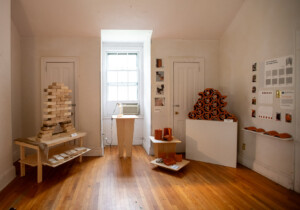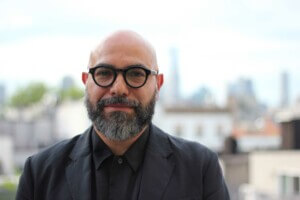Thomas Hanrahan, dean of the Pratt Institute School of Architecture since 1996, is stepping down. During his tenure as dean, Tom rebuilt the School of Architecture, which encompasses eleven programs, into a modern institution. He did this literally from the ashes of a devastating fire that happened one year after he took office, and figuratively from the ashes of Pratt’s checkered institutional history. Tom advocated for and oversaw a new building designed by Steven Holl in 2005, which connected two existing buildings and added both space and grace to the school. He took the school out of its insular history and into global architectural conversations about pedagogy, disciplines, and practices, the dilemmas of cities, environments, and technologies. Pratt Institute is a relatively old school of art, but it is still a young institution.
It is not uncommon for leaders—deans, presidents, provosts—to find the parties thrown for them at the end of their term tiresome. They are often, themselves, drained by years of facilitating programs and individuals. These jobs are prestigious, but they are also unforgiving.
I was hired by Tom to be the chair of the graduate architecture program in 1998, essentially to start a Master’s of Architecture program which did not then exist. I knew Tom before coming to Pratt because we had both sat on many juries at the Graduate School of Design at Harvard and at Columbia University (where he taught for many years under Dean Bernard Tschumi). When I arrived, there was an office for the chair of the graduate program but there was, in fact, very little that looked or felt like a graduate program. With Tom’s considerable help, I started the Master’s of Architecture program the year after I arrived and successfully accredited it five years later. When I arrived there were approximately 18 graduate students, and when I stepped down there were approximately 150; five years after that, under William MacDonald’s chairmanship, the numbers almost doubled, and now under David Erdman they are increasing all the more.
This slice of the school’s development is only one of many initiatives that Tom supported and its success is not primarily attributable to our collective chairmanships. We were all heavily backed up by Dean Hanrahan, who found ways to build this and other programs. He found funds for lecture series and visiting faculty; he equipped the school with contemporary technologies (laser printers, cutters, 3-D printers, robotics); he acquired the software and hardware that was then flooding into architectural schools in the early 2000s because of shifts to digital and parametric design work; he insisted on rigorous maintenance of the building; he consistently hired women for teaching and leadership positions; and he nurtured the creative life of the school at every turn with exhibitions, support of scholarly work, publications, and events.
This sounds like the normative work of any dean but unlike most of the schools in New York and adjacent areas, the lack of institutional systems, as well as money, at Pratt made everything more protracted and difficult. The admissions system was Dickensian, the financial system was archaic. While it was becoming increasingly self-evident in the early 21st century that architecture schools needed to have serious websites, it took years for this to come about at Pratt. “Running interference,” is a too bureaucratic and simplistic term for what Tom has accomplished as dean. What I most want to say is that Tom infused the school with his deep dedication to design and the sustaining of architectural work as contributive to culture and life, and he motivated its growth through an informed intellectual curiosity about everything. Everyone benefited from an awareness of his incredible generosity and insight. Numerous faculty, who have been offered other opportunities, stayed at the school because of Tom.
Tom is an excellent architect and a founding principal of the firm Hanrahan Meyers (hMA), which has designed many contemporary buildings that reflect both his modernist training at the GSD and his openness to experimentation. The firm’s work has won numerous prizes and awards. Tom is also an intellectual and, in the best sense, a systems thinker. hMA’s first monograph, The Four States of Architecture, was both philosophical and scientific in its exploration of how architecture can transform the common elements of everyday life into systems of energy in which perceptual assumptions about light and ground are flexible rather than static. In a similar manner, he transformed the architecture school materially into a well-kept environment and intellectually into a dynamic and non-divisive community.
Tom is not a demonstrative person nor does he launch personal vendettas. He generally does not feel he should be credited with anything. He happens, also, to be a fantastic cartoonist. Many of his cartoons depict an almost existential falling into clueless-ness that is the state-of-things-as-they-are that most of us spend our lives suppressing. They are astute and hilarious. Tom’s relentless work as dean on behalf of all the programs that are part of the School of Architecture is now deeply inscribed in the school, which is one hundred percent for the better. Many, many others—faculty, students, staff, visitors—would have joined me, had they been asked, in saying thank you. Thank you so much, Tom, from all of us.











